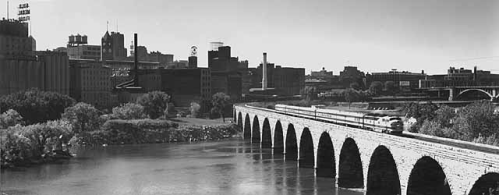Pride Community Icon: Dot Belstler, Executive Director, Twin Cities Pride
 Tuesday, June 14, 2022 at 10:31AM |
Tuesday, June 14, 2022 at 10:31AM |  Becky Fillinger |
Becky Fillinger | Article by Becky Fillinger
 Dot Belstler Photo: David ShermanDot Belstler was hired as the Executive Director of Twin Cities Pride in 2009. She recently chose to retire, after a career where she specialized in community outreach, sponsorships, and volunteerism.
Dot Belstler Photo: David ShermanDot Belstler was hired as the Executive Director of Twin Cities Pride in 2009. She recently chose to retire, after a career where she specialized in community outreach, sponsorships, and volunteerism.
Quorum honored Belstler with a Lifetime Achievement Award this week and she is also the first ever recipient of the Dot Belstler Ally of the Year Award. We talked to Dot about her tenure at Twin Cities Pride and this year’s 50th anniversary of Pride celebrations in Minnesota.
Q: Congratulations on your Lifetime Achievement Award and also for having an award named in your honor! Please tell us the accomplishments you're most proud of during your tenure at Twin Cities Pride.
A: I love that the LGBTQ+ community is more visible than even ten years ago. Of course, it’s not due to me or Twin Cities Pride, but we have strived to create space for people to come together to be who they are. Pride is like a family reunion, welcoming all the relatives - those who have been around for many years and those who are new to the community. I love that we are able to light the bridges in rainbow colors to let queer community members know that they are seen, they are included, and they are loved.

Q: Twin Cities Pride is celebrating a 50-year anniversary in 2022. Please tell our readers a brief history of how it started and how it's going?
A: The first Pride march in the Twin Cities was in 1972 as a commemoration of the Stonewall riots in New York three years prior. It was planned by Jean-Nickolaus Tretter and two other people who have since passed. About 25 people marched down Nicollet Avenue and another 25 or so remained in Loring Park with money to bail them out of jail if they were arrested. No one was arrested and they all had a picnic in Loring Park afterwards. In 1980 the Pride committee applied for a block party and was denied by the City Council and Mayor. The local ACLU sued the city and there was a one-hour block party in 1981. Over the years the Pride Festival and March have grown to become one of the largest Pride events in the country. Visitors can see some of the history of Pride at the History Pavilion (Loring Community Center) during the Pride Festival.
Q: Does the 2022 Festival have a theme?
A: The theme for our 2022 Pride Celebration is Past, Present, Future, and we have three Grand Marshals each representing an era: Past: Jean-Nickolaus Tretter, Present: Nic Zapko, and Future: Hildie Edwards.
Q: Are there multiple events?
A: Yes! We’ve had several events already, but the Pride Family Fun Day is coming up on June 19. It’s a free family picnic at Como Park East Pavilions and includes several family-fun activities. The Festival is June 25-26 from 10a-6p in Loring Park. We’ve added a dedicated disability services area and Twin Cities Sober Pride space with a barbeque. It’s also the 20th Anniversary of the Power to the People of Color Stage at Pride. We are so proud to support this space and the BIPOC and other artists who perform on this and all of our stages.

Saturday night’s Pride in Concert is moving to The Armory this year and our headliner is Carly Rae Jepson! Tickets are available at The Armory’s box office and Ticketmaster. Visit tcpride.org and our Facebook page for a chance to win tickets in the White Bear Mitsubishi VIP Lounge!
 Ashley Rukes is the former director of the Twin City Pride Festival, and the namesake of the annual Twin Cities Pride Parade. Photo: MNHSFinally, on Sunday at 11 am, the Twin Cities LGBTQ+ Pride March honoring Ashley Rukes will be back on Hennepin Avenue. We have over 100 contingents in the march this year, even though it is shortened by three blocks due to construction. Bleacher seating is available in front of Rock Bottom Brewery. Tickets
Ashley Rukes is the former director of the Twin City Pride Festival, and the namesake of the annual Twin Cities Pride Parade. Photo: MNHSFinally, on Sunday at 11 am, the Twin Cities LGBTQ+ Pride March honoring Ashley Rukes will be back on Hennepin Avenue. We have over 100 contingents in the march this year, even though it is shortened by three blocks due to construction. Bleacher seating is available in front of Rock Bottom Brewery. Tickets
Check out our Events page for a complete listing of all events.
Q: Do you need volunteers for this year's Pride events?
A: Volunteers are welcome! Everyone who volunteers for a four-hour shift gets a t-shirt, a free meal, and a gift bag of Pride goodies. PLUS, the Minnesota Twins have provided four tickets to a Twins game for every volunteer. Apply here.
Q: How may we follow your news?
A: The most up-to-date news will be found on our social media, specifically Facebook. You can also sign up for our email updates on tcpride.org at the bottom of the page.




























































































